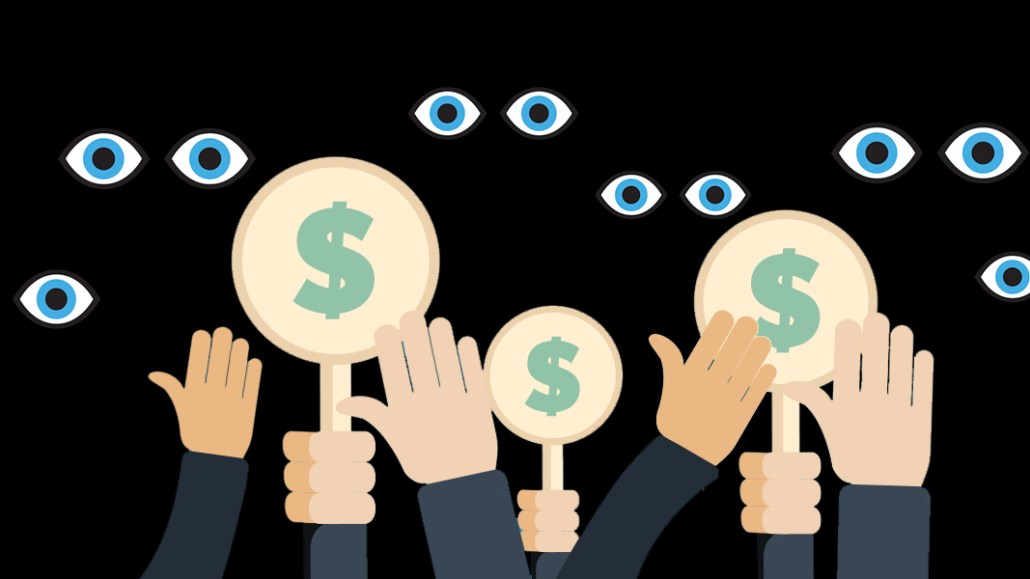
Stephanie Gutnik, global head, digital out-of-home, Verizon Media
The out-of-home (OOH) media industry has been quick to convert strategic billboards to digital displays and implement digital-only networks in verticals ranging from retail and hospitality to airports and taxi cabs.
It was only natural that as digital transformation modernized the physical elements of OOH, automated transactions followed. Now, data partners have emerged to complement the first-party data inherent to publishers, and programmatic has become a viable way to bring the digital out-of-home (DOOH) channel into broader conversations.
The promise of DOOH is that of omnichannel expansion — and revenue
While traditional OOH has been around for a long time, DOOH is often still considered an emerging channel. This classification connotes innovation and promise surrounding the medium’s potential. Indeed, DOOH is beginning to generate a level of revenue and omnichannel purpose that is taking it from promise to prominence — earning it a seat at the adult table.
From national brands to performance-based D2C companies, savvy buyers are leaning into DOOH for its visual impact and full-funnel proficiency. That trend is coupled with certain challenges, however. For example, in a recent Verizon Media study, 90% of advertisers agree that DOOH is the right place to invest, but 53% find buying it difficult. Much of this perception comes from the sheer number of screen formats and creative assets requiring management. This contributes to the medium’s uniqueness but can be daunting when resources are limited.
The path to simplifying DOOH is marked by partnerships — and leads to creativity
DOOH has dynamic content capabilities, and display and video-enabled supply that bridge the in-home and out-of-home viewing experience. Some of the leading tech platforms simplify the DOOH activation process by offering creative services that share best practices and assist with reformatting.
Omnichannel platforms make DOOH easier to purchase by catering to the 93% of advertisers who want a single platform for ad planning. With an effective partner, advertisers get the DOOH tools they need to drive growth. Audience insights, retargeting and full-funnel measurement capabilities help demonstrate DOOH’s value in the modern media landscape.
DOOH also plays nicely with others. When incorporated in an omnichannel media strategy, DOOH provides essential reach across audiences who are on the go and can amplify the effectiveness of other channels. The medium is proven to reach light TV viewers, providing linear and connected TV buyers with audience extension opportunities and cost efficiencies.
Top spenders in the channel do it right by taking advantage of new features and producing clever creatives — think Apple, Netflix and McDonald’s. Netflix believes in the medium so much that it purchased a billboard network.
Success at DOOH is leading to long-term strategies
With the tools and expertise in place to guide spending and deliver results, adding DOOH to the media mix has never been so straightforward. Extended campaigns and reinvestment prove that DOOH is earning the trust of buyers who have no history of engaging with this channel.
To advertisers seeing diminishing marginal returns in certain media, a test that reallocates spend to DOOH can demonstrate its performance capabilities across advertising plans and objectives. DSP teams can help guide advertisers in the right direction for budget allocation, KPI alignment and creative requirements. To DOOH sellers who have a story to tell, do so through compelling case studies and resources that help refresh longstanding habits.
After the “year of mobile” turned into five years, and with the “years of CTV” underway, DOOH confidently holds the promise of being the next big thing at the adult table.
More from Digiday

What publishers are wishing for this holiday season: End AI scraping and determine AI-powered audience value
Publishers want a fair, structured, regulated AI environment and they also want to define what the next decade of audience metrics looks like.

Starbucks hires first-of-its-kind marketing role heading up fashion and beauty collabs
Neiv Toledano has joined Starbucks as its senior marketing manager of fashion and beauty.

Media giant Essence launches a marketplace for Black women-led brands
Essence has launched WeLoveUs.shop, a new online marketplace dedicated to Black women-led brands.





